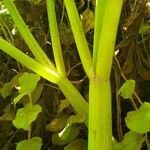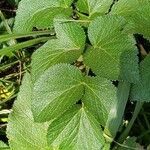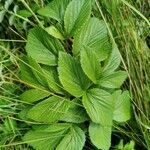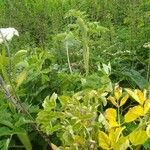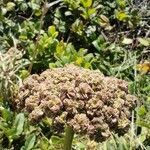A herb. It has a thickened root. The stem is thick, green and hollow and becomes somewhat woody with age. It can grow 1.3 m tall. The leaves have 3 leaflets. The leaf stalks are inflated near the base. The flowers are small with five white or greenish petals. There are many flowers in an umbrella like arrangement.
